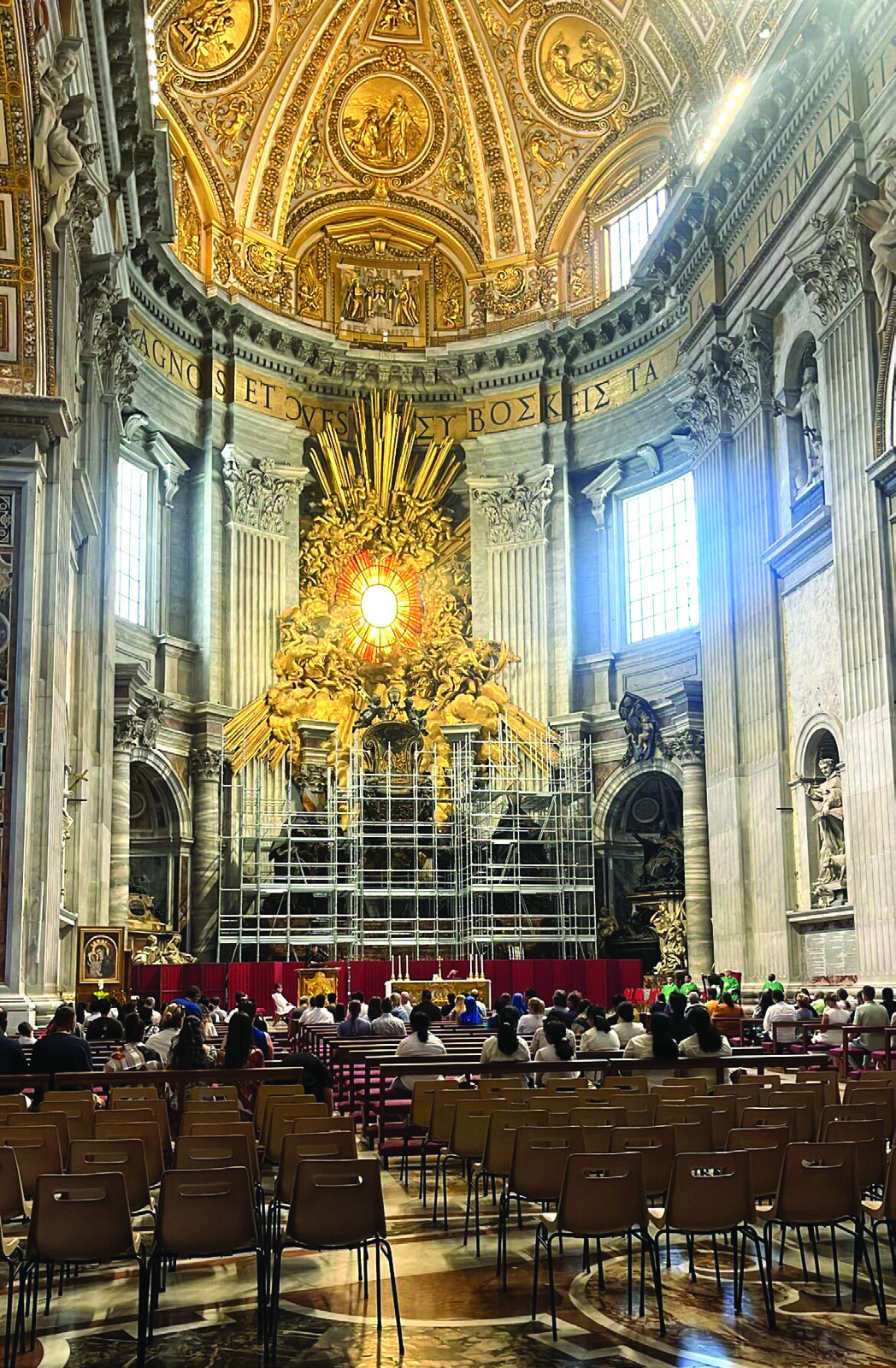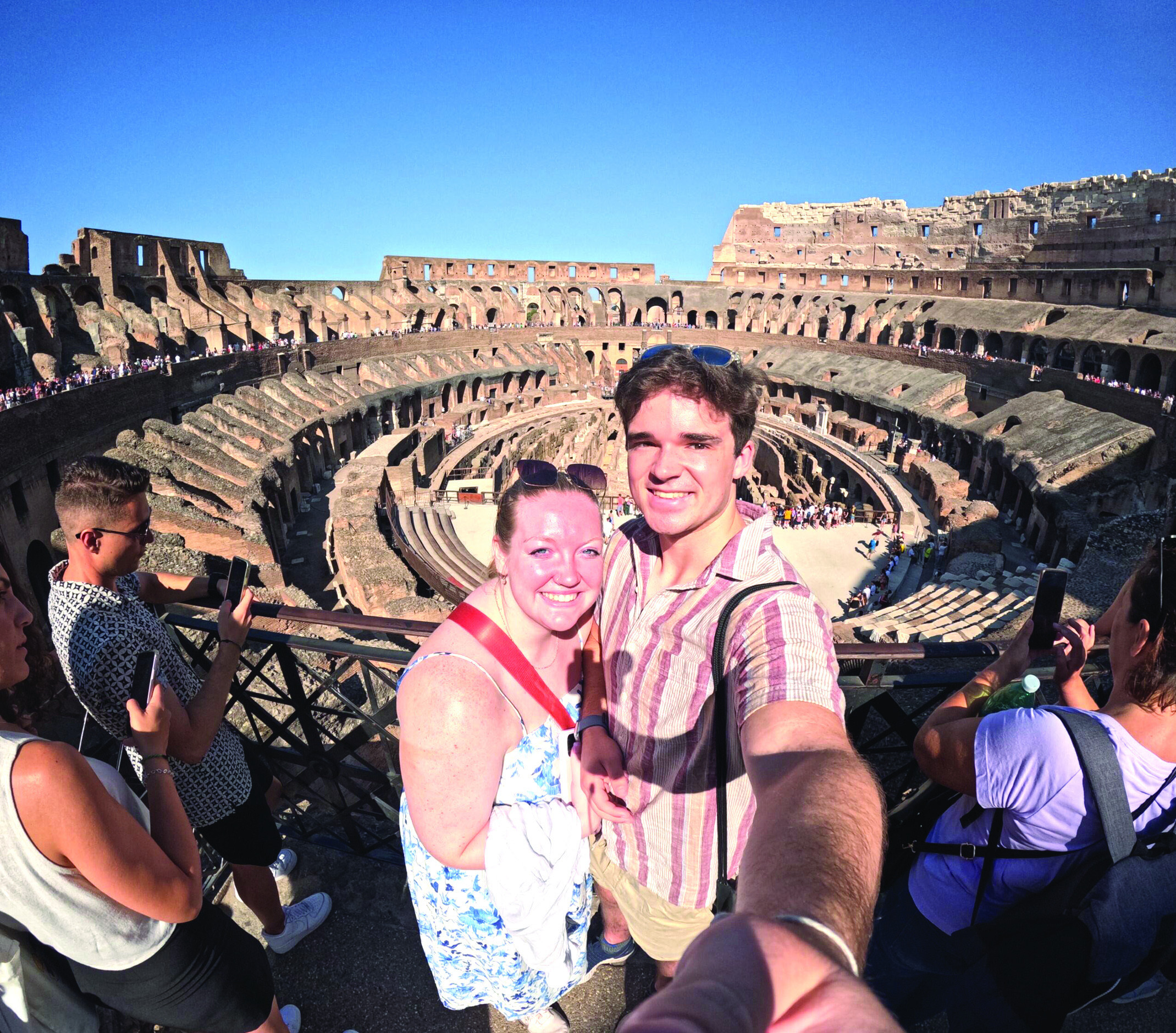Editor’s note: Welcome back to the third in a series of travel articles by Chas Chappell, a senior at Washington and Lee University. As we explained when we published the first story Sept. 4, Chas attended Oxford University for six weeks this summer to study English. As a budding travel writer, he also took time to write about some of his experiences as he explored several other countries in Europe on a budget. He has also produced videos to go along with these stories. You can find a link to the video that accompanies this story with the story posted on our website.
After six weeks of studying and living in England, it’s time to end my European summer with the Italian vacation of a lifetime. With all the lavish pasta dinners plastered online, I was worried I’d be priced out of this trip. But I’m excited to share how a few key tips made my week in Venice and Rome both memorable and affordable.
I started my vacation with a 7 a.m. flight from London to Venice. If you’re already in Europe, the cheapest flights from one country to another are usually pretty early. I was lucky to be joined by my girlfriend, Elizabeth, who helped me plan some of the activities we’ll be trying this week. We got to Venice around 10 a.m., which gave us the whole day to explore.
Historic Venice is famous for its intricate waterways and stunning architecture. Built over the Adriatic Sea, every building sits on massive wooden stilts and concrete. We’ve all seen the singing gondoliers ferrying tourists through the canals – which cost 90 euros per 30 minute ride. But day-to-day travel happens on the Vaporetto, Venice’s public ferry system that costs $40 for a 48 hour pass. It’s also great for scenic rides down the Grand Canal.
Our first stop was Rialto Bridge. Built in 1173 and rebuilt in 1588, it’s known for its beauty and perseverance as one of the only bridges in Venice to stand the test of time. Rialto also hosts a market for artists and jewelers – if shopping’s your thing, Rialto’s the spot. By this point we were pretty hungry, so we stopped for our first Italian pizza.
Finding authentic Italian food in Italy was more difficult than I thought. Riva Rialto had a great view of the bridge, but the margherita pizza looked a lot like something you’d find in New York. I learned that the closer a restaurant is to a touristy area, the more the menu caters to foreign tastebuds – not bad by any means, but the best food lies further away from the crowds, without pushy waiters and large picture menus. We’d find that authenticity later at Trattoria Da Nonna Pina, where I had a fresh, creamy carbonara – one of the best meals of my life.
Venice is overrun with tourists. During peak season, they can outnumber locals two to one. So where do these locals go when they’re pushed out of the touristy areas? To the beach! It’s illegal to swim in Venice’s canals, so Venetians take the Vaporetto out to the Lido, a barrier island with a long Adriatic coastline.
The Lido’s a lot different from Historic Venice – for one, it’s got cars. It’s also a lot quieter – we ran into only a handful of people on the walk from the Vaporetto to the free beach. With 75-degree waters and gentle, shallow waves, the Lido’s a great place to relax and enjoy beachside Aperol, take a swim or have a picnic. Unlike the crowded Atlantic beaches I’m used to, Italians give each other plenty of space when setting up towels and umbrellas. If you’re looking for a fun, relaxing and off-the-beaten-path stop, the Lido’s a great choice.
After washing off the Lido sand, Elizabeth and I made our way to Musica A Palazzo, a 19th-century opera in the heart of Venice. It was our most pricey stop of the trip at 90 euros, but a unique Venetian twist made it well worth it for us. Instead of a traditional theater setup, we followed the actors from room to room as they performed “The Barber of Seville.” They’d also pause between scenes to pass out champagne to the audience of 40 – if you get there early, you can snag seats just inches from the performers.
The next day began with breakfast at Ca Dalisera B&B. At only $80 a night, the rooms were comfortable and the pastries, coffee and orange juice were nice. But it was the owner’s father, Michelangelo, who made that simple breakfast one for the books. Without any English, he warmly and demonstratively told his life story.
An 87-year-old architect, he runs Ca Dalisera with his son and daughter. He also asked us about American politics by saying “Trump?” and flashing a thumbs up or thumbs down sign. I can’t recommend Ca Dalisera enough – their hospitality was unmatched.
A mask-making class was first on the docket. Venetian masks are a vibrant and intricate craft that Venetians dedicate their lives to. As someone who’s had trouble coloring in the lines since kindergarten, I feared upsetting the masters at SanMarco596 Masks. Our teacher, Giorgio, carefully outlined Venetian patterning and jazzed up my final product with gold decorations. I’m still no master, but I’m pretty happy with how it turned out!
St. Mark’s Square is Venice’s most recognizable site. It’s named after St. Mark, whose bones are buried in our next stop: St. Mark’s Basilica. Built in the ninth century, it’s one of the most ornate churches in the world. Entry is just 3 euros, but for another 5 euros you can see the Pala D’Oro, a massive golden altarpiece that’s almost blindingly beautiful. Another 7 gets you upstairs to a museum and a view of St. Mark’s Square and the surrounding waters. Be careful – the cheap price means it can book up months in advance, so watch their official website to snag tickets when they’re available.
A short Vaporetto across the lagoon is St. George’s Island. Not only does it have another gorgeous church to explore, but it’s also got a bell tower. For 7 euros, you can take the elevator to the top for panoramic views of Historic Venice. The beautiful scenery was the perfect conclusion to our final evening in Venice.
The next day, we did a bit of shopping for Murano glass and a free Gondola photo-op in Libreria Acqua Alta before boarding the four-hour train to Rome. Italian trains are an excellent value: just 25 euros a person for comfy seats,


.jpg)


